Women representation in boardroom is still a most debated topic across the globe. A 2018 Catalyst: Inclusion in action report states that diverse boards result in lesser frauds, fewer controversial decisions, and better ratings on corporate social responsibility.
In a response to the paucity of women in top management and to protect interest of shareholders, various countries have taken initiatives to increase the number of women in senior management roles. For instance, Norway was the first to mandate 40 per cent of positions for women directors in 2003.
Several other countries followed the suit after that and worked on their boardroom policies. Some of them increased executive attention and monitoring of diversity on boards. In last ten years, the percentage of women board directors has increased from 10.4 per cent in 2004 to 21.6 per cent in 2018. Further, the top three countries with the highest number of women directors are those which had set aggressive targets.
Let us take a look on how mandates have changed the corporate boardrooms with increased women representation in top G20 countries.

The data clearly shows that the increase in representation of women is correlated with increase in special attention to the issue either in the form of mandates or voluntary monitoring. India was the first among developing countries to announce mandates for women on boards in 2013.
Our country then reinforced it in 2019. So far, mandates in India have positively impacted the number of women directors on board. But still, results don’t narrate the resounding success in bringing diversity to Indian boardrooms.
Number of women directors on board
As per a study by FICCI, women accounted only for 16.9 per cent (1898) out of total 11,251 directors till December 2019. According to the data collected over the years, a majority of companies which comprises of 73 per cent listed on the NSE have appointed only the minimum regulatory requirement of one woman director.
A mere 76 companies (4.3 per cent) have appointed three or more women directors. Disturbingly, 24 companies listed on the NSE (1.3 per cent) of which eight are part of the NSE 500 list have not yet appointed even a single woman director.
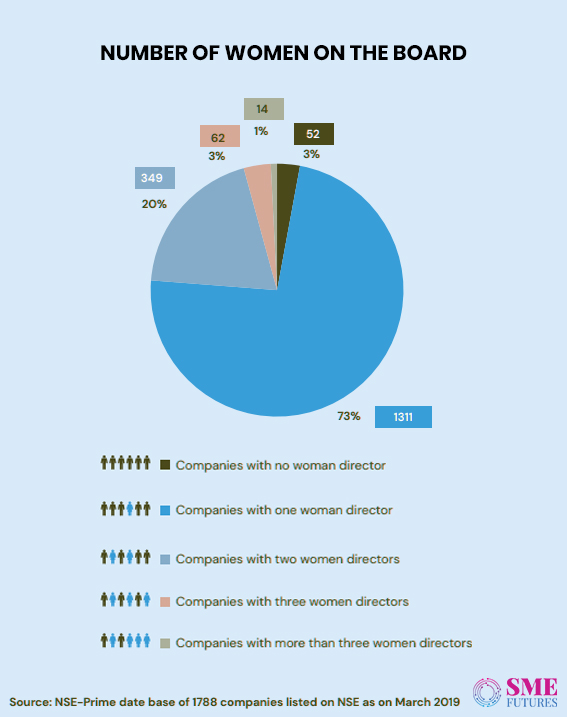
In fact, only five companies have five women directors on their boards. This includes MSTC Ltd., GIC Housing Finance Ltd., Godrej Consumer Products Ltd., Godrej Agrovet Ltd, and Apollo Hospitals Enterprise Ltd. The figure appears starker when compared to companies with men directors.
According to the research, 91 per cent of companies have more than three men directors. Along with this, the most prevalent number of men directors in a company is five. Furthermore, nearly 6 per cent of NSE-listed companies have more than 10 men directors.
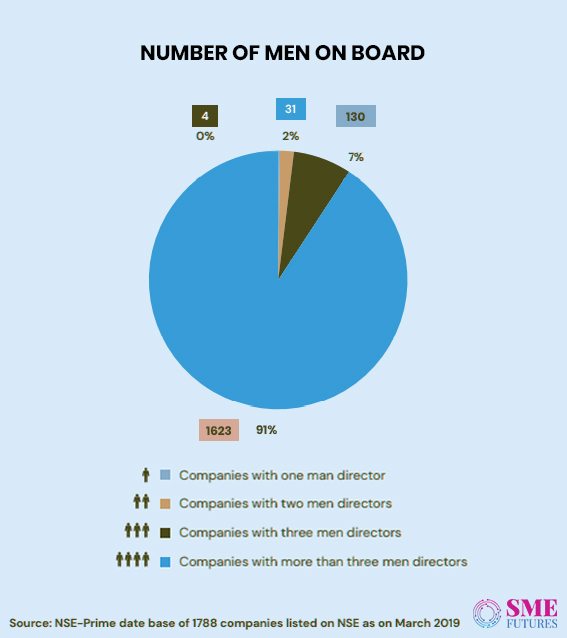
Among the NIFTY 50 companies, 49 companies have 73 women directors occupying nearly 192 positions as directors. Among these 73 women, fourteen hold 5–6 directorial positions across NSE-listed companies, while seven hold seven directorship positions each.
Industry-wise representation of women as directors
Provided that the mandate applies to all industries, the proportion of women directors was expected to be the same across sectors. However, that is not the case. Interestingly, energy (13 per cent), power (13 per cent), and chemicals (14 per cent) industries still not seem to be keen on appointing women directors. However, the sector such as trading (21 per cent), media and entertainment (20 per cent), and services (19 per cent) performed better when it came to representation of women as directors.
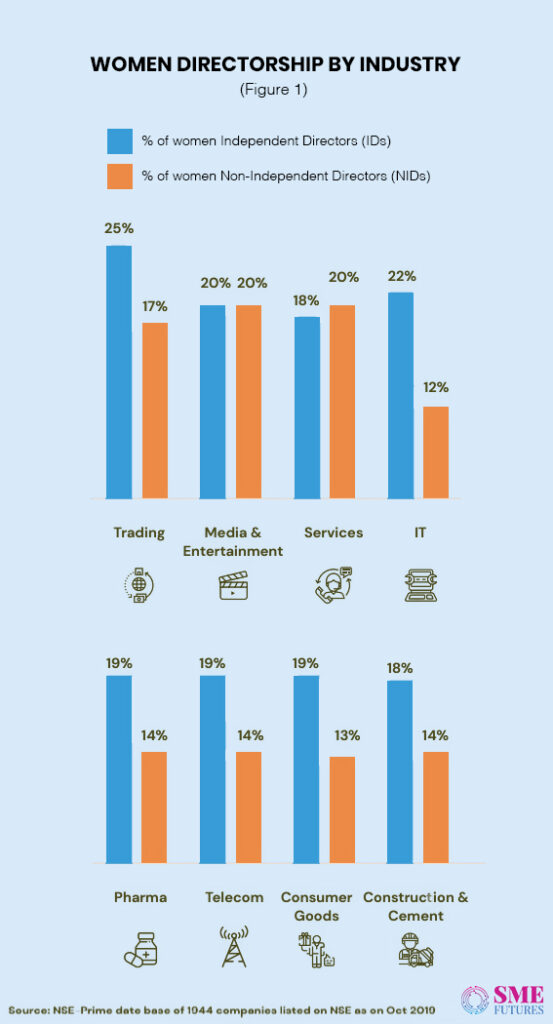
On the other hand, the highest proportion of women independent directors was found in trading (25 per cent) and IT (22 per cent). On this score, among the NSE 500 firms, consumer goods and IT sector (22 per cent) were leading. Among the non-independent directors in NSE-listed firms, the lowest proportion of women is 8 per cent for energy sector, and 10 per cent for chemicals industry. The highest presence of women independent directors was in media and entertainment and services industry at 20 per cent.
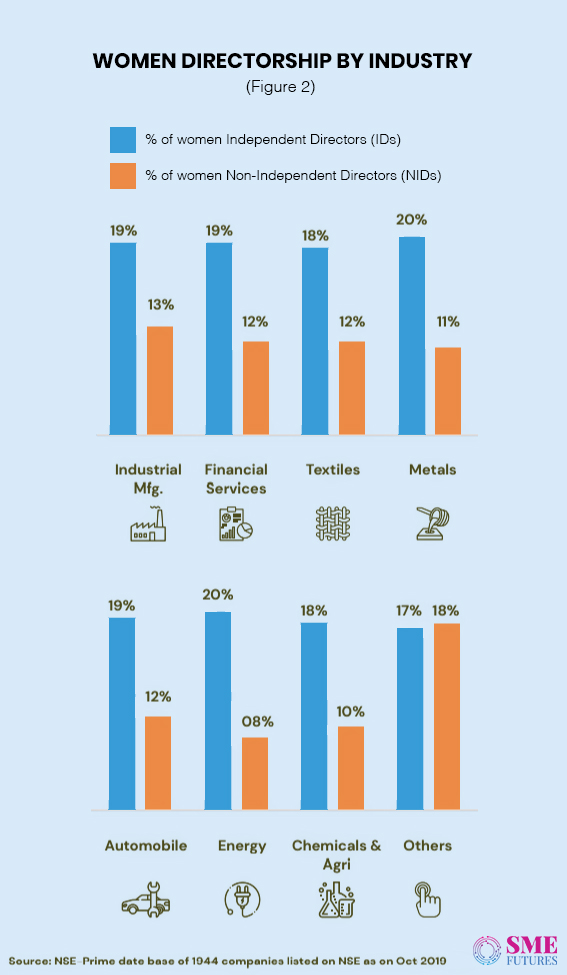
More young female directors than male counterparts
The representation of women in boardrooms is still very less. While, the reason behind it is still unclear, the noteworthy pattern is that female directors tend to be younger. The FICCI study states that average age of women board directors is 14 per cent lower than the men serving on boards.
Before the mandate of 2015, the average age of female on the boards was 53.4 years. The age standards significantly changed after India focused on hiring women directors. As per the analysis, the earlier completed engagement lifecycles had a larger age difference (5 years) for men versus women.
For the current active board members, there is a smaller age difference (1.5 years) at the time of appointment. Adding to it, board directors’ average age has also reduced (from 67 to 61.2 years). This can be seen from the difference between average ages for discontinued versus active boards.
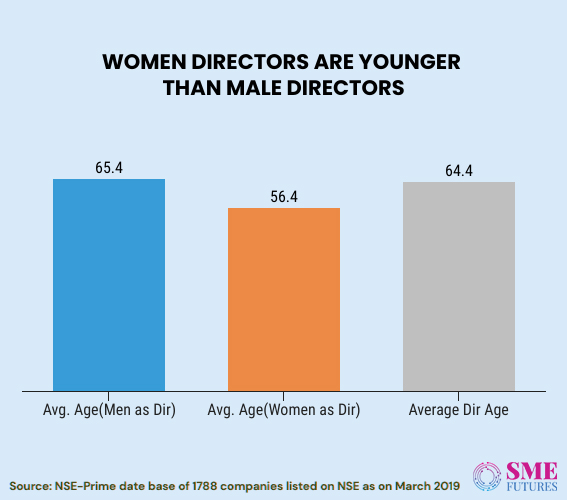
This data suggests that the addition of women to the boards has contributed in one obvious way; now the younger men also have the opportunity to enter boards. Further, the tenure of women is also less then male directors.
Board membership tenure data shows that women serve 4.6 years (more than 40 per cent shorter) on an average, as compared to 7.8 years by men. Overall, the data infers that women are joining younger, serving for fewer years, and retiring younger as compared to men.
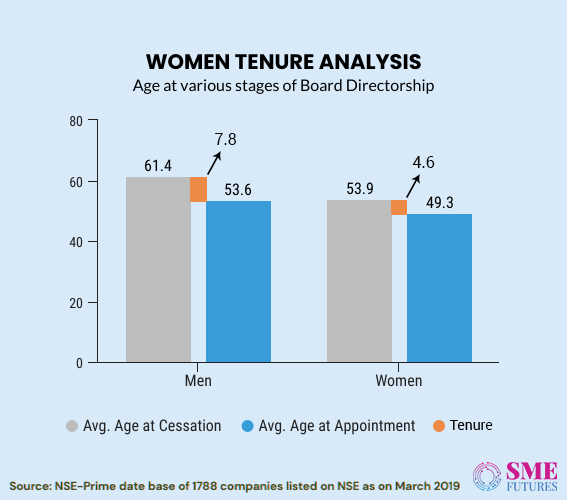
Education parameters of women directors
On the front of education, women directors are as qualified as men. Even the women directors that prioritized family interests are highly educated. The analysis found that almost 51 per cent held master’s degrees and 5 per cent were doctorates. 51 per cent all women directors held a master’s degree.
38 per cent of them held a bachelor’s degree while less than 2 per cent were diploma holders, intermediate or just high-school pass-outs. When the educational qualifications of independent women versus non-independent women directors were compared, 12.6 per cent possessed doctorates among independent women directors and 4.6 per cent among non-independent women directors.

Mostly of the women directors graduated in commerce, management, and administration followed by a liberal arts discipline. The study surprisingly reveals that the number of women graduates in science is least among various educational groups.
When compared to men directors, general graduates among women (29.1 per cent) are slightly higher than among men (26.9 per cent). The technical graduates such as engineers and doctors are few among women (7.4 per cent) as compared to men (13.1 per cent).
The number of men and women directors holding master’s degrees and doctorate degrees is very similar. It is also worth highlighting that women with technical and science backgrounds are not rising to top positions. This further underscores the trend of fewer women entering and sustaining in STEM (Science, Technology, Engineering, and Mathematics) related professions.
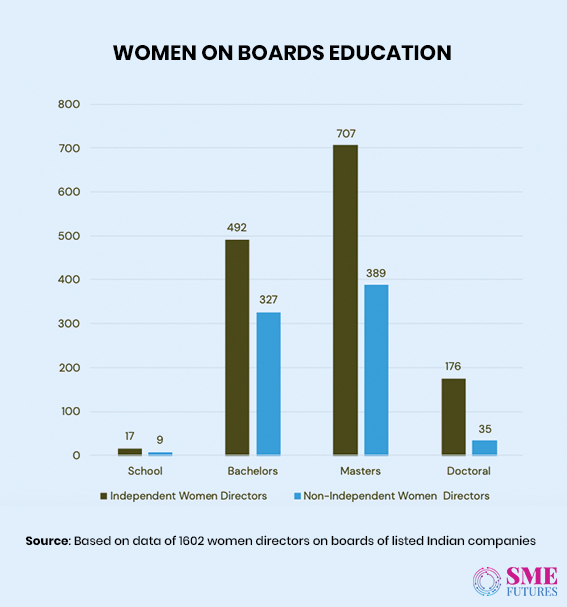
More experience is preferred
With more appointments of the women on board, majority of them in leadership roles were found to have a good professional experience. When analysing the participation rate in committees, the average female directors were found to participate in 1.9 committees. 780 women directors out of 1898 women directors serve as chairs, which is 41.1 per cent of all women directors.
But, it is merely a 6.9 percentage of the total number of directors (11,251) serving on boards. The top committees where women usually serve as members include audit; nomination; remuneration and compensation; CSR and business responsibility; and sustainable development committee. The highest proportion of women chairs are seen in stakeholders’ relationship and grievance committees.
This is followed by CSR and business responsibility and sustainable development committees. The audit committee has a significantly less number of women as members (787) and only 111 of them serve as chairpersons on that committee. This is merely a 6 per cent representation in all listed companies.
Hence, it can be said that there is a possible biasness in the selection of board members for committees. This limits them for roles in areas such as stakeholder and grievance committee and CSR committees leading to their less number in leadership positions in audit and nomination or remuneration committees.
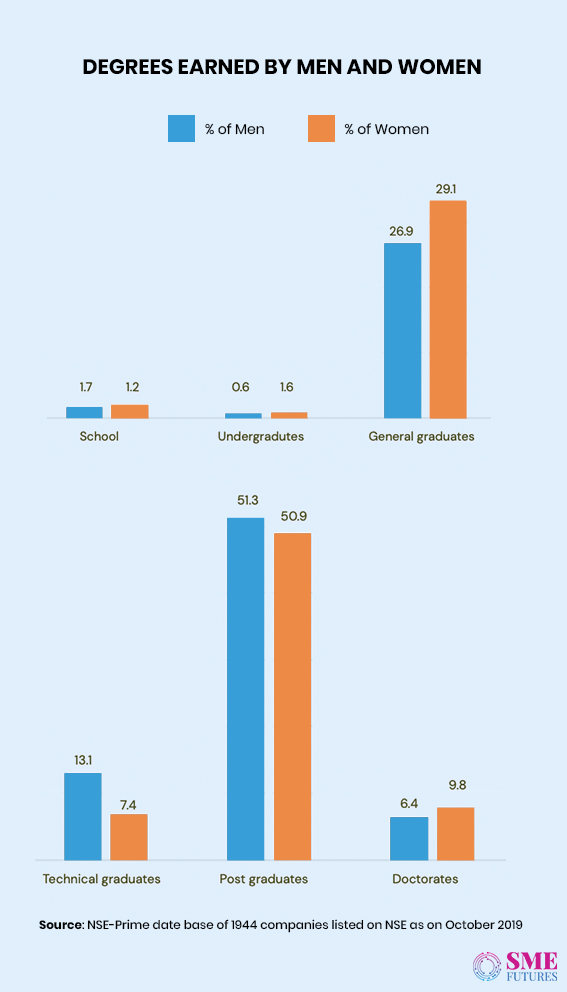
Pay scale of women in boards
According to the report, women directors are getting paid approximately 55 per cent less than men in the same position. The data was analysed for pay and benefits data of 5,155 directors in top 480 NSE-listed companies. While sitting fees is the same for women and men directors (as mandated by regulation), the remuneration difference is seen mainly among non-independent directors.
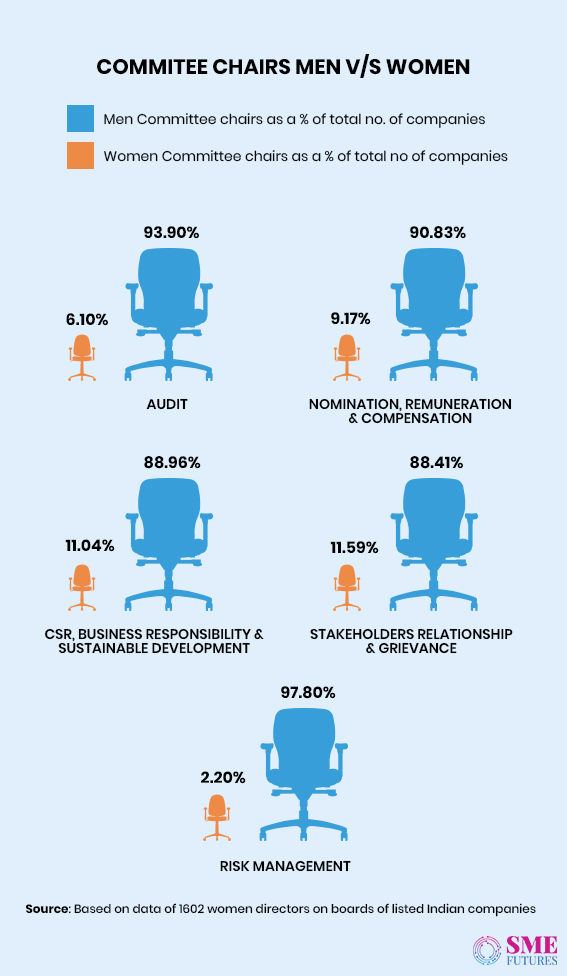
The primary data on women board members also indicated that women were not satisfied with the remuneration offered to them. Both independent and non-independent women directors expressed that at least their expectations on remuneration should be met.
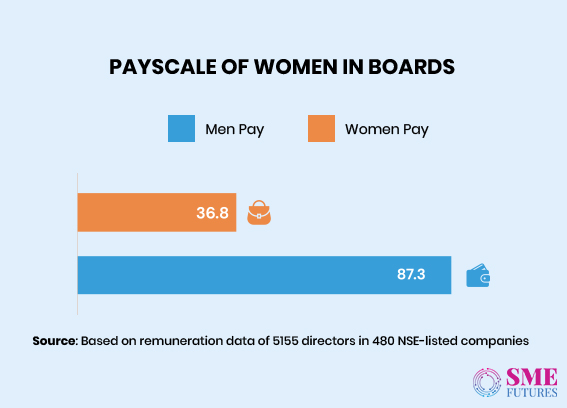
Reasons behind leaving board
Reasons for men discontinuing board are generally sudden demise, retirement, or infirmity. But when it comes to women directors, reasons for cessation are usually preoccupation, retirement, ending of nomination or personal reasons.
The percentage of women who discontinue directorial position due to a preoccupation and personal reasons is more than double from that of men. It is 36 per cent for women versus 15 per cent for men. The research also speculates that many women cite politically-correct reasons such as preoccupation, personal reasons for quitting directorial positions.
This could be just a pretense for not being able to say things, not finding it meaningful to be in the role, not being able to contribute, not being heard in the board, or having frequent differences with the board leadership. It could also mean that the company had appointed the woman director as a stop-gap arrangement.
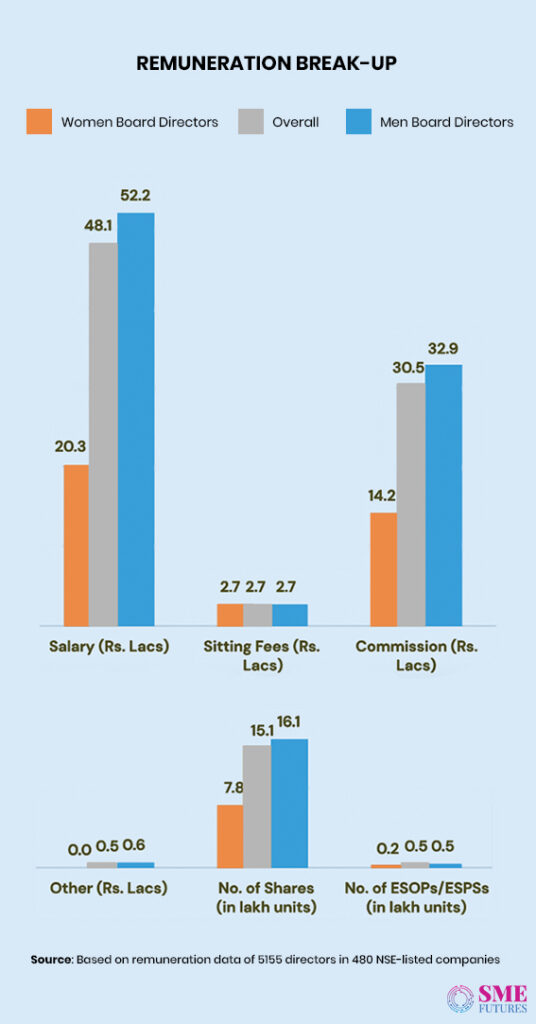
Challenges faced by female directors
In an overall professional career, a women employee fights on various fronts. When it comes to female bosses, it is assumed that they do not face obstacles. But, usually higher roles come with larger responsibilities and challenges.
The survey revealed that more than 50 per cent of the respondents experienced arduous regulatory pressure and heavy liabilities in their roles. Several women directors mentioned that responsibilities seemed more rigorous because they had little immunity and very few ways to protect themselves from the associated risk.
Another common challenge for the women director was the difficulty in overseeing the firm’s operational matters. This included specifics such as limited access to the firm’s operational data in board meetings, and limited time available to review and comment on operational issues. At times, duration of meetings was very short.
A quarter of the respondents also reported challenges in overseeing the firm’s leadership or taking management decisions. They highlighted specific challenges such as the board’s limited access to the company’s decision-making process and no mandate or culture of taking board’s approval for critical decisions in the firm.
Robust decision-making processes are possibly the most enabling factor for directors while playing the role of protecting shareholder’s interest. Combining insights from enabling factors and challenges shared by women directors, it appears that trust in decision making processes of an organisation is essential. Thus, organisations should consciously build trust among board members.
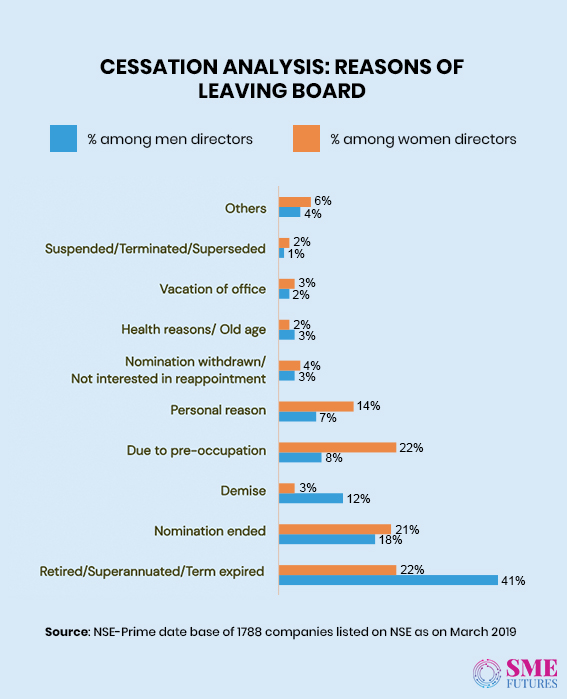
Steps ahead against tokenism
There is definitely a surge in the appointments of females at leadership positions after the mandate. Despite the pick-up in the appointments, women representation in Indian corporate boardroom still lags behind. In fact, they occupy a meagre 16.8 per cent at all board positions in public-listed Indian companies. Barely, 4 per cent firms have three or more women on board.
Viewing these factors, there is a clear need gap for women board members in getting industry exposure and opportunities to create an on-ground impact. On the other hand, the issue with India Inc. is that some of them are treating mandate as the ceiling for just filling the quotas while it should be actually implemented on ground.
On a broader level, it appears that regulation have rejuvenated the focus on gender diversity in boardrooms. However, India continues to trail behind global standards on inclusion women in boardrooms. This is a critical fix that corporate India needs to address. Only then gender diversity will become a natural outcome rather than a focused fix at the board level.










